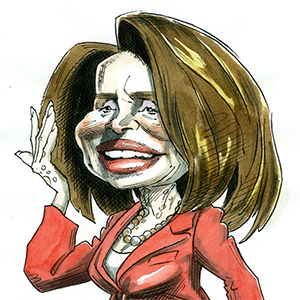The Latino Vote? In 2024, It's Complicated.
SAN DIEGO -- As a journalist, I've been telling the story of the Latino vote for 30 years. As a citizen, I'm part of that story.
I'm Exhibit A: I'm Latino, and I've been a voter for nearly 40 years. I'm a cafeteria voter who refuses to vote a "straight ticket," often voting for Democrats and Republicans on the same ballot. I vote the person, not the party. And I live in the middle of the road, eschewing the extremes and instead gravitating to nuance and common sense.
So I know the subject of the Latino vote better than most of the reporters and pundits who freely opine on what they don't understand.
Now, with less than two weeks until the Nov. 5 election, a media that is normally encased in a Black-and-white bubble has miraculously discovered the Latino vote. Still, much of what is being said by pundits is wrong. And that's because too many analysts view the Latino vote through a partisan lens instead of a cultural one.
I won't give away the ending, because -- in a coin flip election -- no one knows how this telenovela is going to end.
Still, in 2024, here are 12 things you should know about the Latino vote.
-- There is no such thing. There is no solid bloc of Latino votes. Are we talking about Puerto Ricans, Dominicans and Guatemalans, who tend to vote for Democrats? Or Cubans, Columbians and Venezuelans, who often vote for Republicans?
-- Mexican Americans are all over the map, which makes them the most confusing subset but also the most interesting and the most sought after. Their unpredictability means they're constantly in play, and not anchored in any particular ideology or voting pattern.
-- It's determined by a variety of different factors, from age, gender, income and level of education to the state we live in, whether we're urban or rural and whether we came by our U.S. citizenship through the naturalization process or because we were born here.
-- While the Latino vote is not unified, it is sizable. Latinos account for 14.7% of total eligible voters. In 2020, a record number of Latinos (nearly 30 million) were eligible to vote, and a record number (about 16.5 million) voted. This year, voter turnout is likely to be even higher.
-- Latinos are more conservative than liberal, on both economic and social issues. And while we're more likely to register Democratic over Republican by a 2-1 margin, we're conservative Democrats. For many, it's a short walk to vote Republican even if it's just once.
-- We vote for the person, not the party. As voters go, we're emotional, not rational. We put a lot of stock in how we feel about a particular candidate and whether we relate to that person. If we don't connect with someone running for office, we won't vote for them.
-- We are perfectly comfortable camping out in the middle of the road. We tend to shun the radical extremes on both the right and the left. We prefer solutions over sound bites, compromise over confrontation and professionalism over personal attacks.
-- Our top issue is not immigration but mainstream concerns such as inflation, crime, the economy, education and health care. On immigration, Latinos are in flux. Twenty-five years ago, we would defend immigrants. Today, many of us support border restrictions.
-- Location, location, location. Of the seven battleground states that will likely decide this election, Latinos represent, according to the 2020 census, a double-digit percentage in four of them: Georgia (10.5%), North Carolina (10.7%), Nevada (28.7%) and Arizona (30.7%).
-- A Republican running for president doesn't have to get 51% of the Latino vote to crush a Democratic opponent. If he or she gets more than 35%, that will probably be enough to win. If the Republican gets 40% or more, it's lights out for the Democrat.
-- With her waffling and evasiveness, Vice President Kamala Harris does not inspire confidence for many Latinos. During a town hall this week, when CNN's Anderson Cooper asked if she supported a border wall, she ducked the question and would only say she wants to "strengthen our border."
-- Meanwhile, former President Donald Trump constantly improves his performance with Latinos. In 2016, according to exit polls, Trump got 28% of the Latino vote. In 2020, he got 32%. Now polls show him getting more than 35%. In a recent NBC News poll, Trump got 40%.
Latino voters are a complicated bunch that can be difficult to figure out. Just like many of their fellow Americans.
========
To find out more about Ruben Navarrette and read features by other Creators Syndicate writers and cartoonists, visit the Creators Syndicate website at www.creators.com.
Copyright 2024 Creators Syndicate, Inc.





































Comments